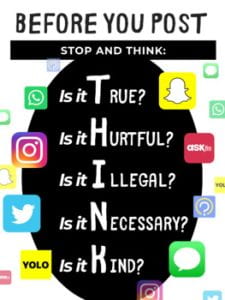The New Face of Misinformation: Deepfakes and Their Legal Challenges
What if I told you that the video of a celebrity endorsing a product or a politician delivering a shocking confession wasn’t real? That’s the unsettling reality deepfakes have created, where seeing and hearing are no longer believing. Deepfakes are a double edged sword – while they can be used for entertainment and creative expression, they also raise significant risks to privacy, spread misinformation, and enable manipulation. In a 2022 iProov study, 71% of global respondents were unaware of what deepfakes were, yet 57% believed they could distinguish between real videos and deepfakes. This gap in knowledge is alarming, considering deepfake technology can create entirely convincing and fictional representations of public figures.
What Are Deepfakes, and Why Are They Problematic?
A deepfake is a highly realistic image, audio, or video generated by artificial intelligence, through deep learning models, to make someone appear as if they are saying or doing things they never did. Think face swaps, cloned voices, or AI-generated speeches. Deepfakes have been used to defame individuals, including public figures, by falsely attributing statements to them, and have been used to create non-consensual explicit content, such as deepfake pornography.
A prime example is when sexually explicit deepfake images of Taylor Swift flooded social media in January 2024, forcing platforms like X (formerly Twitter) to take drastic action by removing content and banning accounts involved. This raised questions about social media companies’ responsibility in controlling the spread of harmful AI-generated content.
Legal Ramifications: Are Deepfakes Protected by the First Amendment?
Deepfakes exist in a legal gray area. Defamation and copyright can sometimes address misuse of AI, but they don’t fully account for the complexities of AI-generated content due to its rapidly evolving nature. This creates tension with constitutional rights, particularly the First Amendment, which protects free speech. Courts no w face difficult decisions, such as whether and how to punish deepfake creators, where to draw the line between free speech and harmful content, and how to address the legal ambiguity that has complicated federal regulation, prompting some states to take action.
w face difficult decisions, such as whether and how to punish deepfake creators, where to draw the line between free speech and harmful content, and how to address the legal ambiguity that has complicated federal regulation, prompting some states to take action.
The DEEPFAKES Accountability Act: A Federal Response
While no comprehensive federal regulation addressing deepfakes currently exists, the DEEPFAKES Accountability Act provides a framework for future legislation. Initially introduced in 2019 and renewed by Representative Yvette Clarke in 2023, the bill requires clear disclosures for AI-generated content to inform viewers, gives victims the right to seek damages, and introduces criminal penalties for malicious use of deepfakes. It specifically targets harmful applications of deepfakes, such as spreading disinformation, manipulating elections, and creating non-consensual explicit content.
If enacted, this law would empower agencies like the FTC and DOJ to enforce these regulations. However, achieving a balance between protecting victims and safeguarding free speech rights presents a challenge. Courts would likely need to evaluate each case individually, carefully weighing the totality of the circumstances surrounding the use of deepfake technology, which also poses significant challenges within legal practice, particularly regarding the authenticity of evidence.
The “Deepfake Defense” – How Deepfakes Impact the Legal System
Deepfakes present evidentiary challenges in courtrooms. Lawyers and defendants can now argue that incriminating videos are fabricated. In fact, recent high-profile cases have seen defendants cast doubt on the authenticity of video evidence by claiming it was AI-manipulated. This concept has been coined the “deepfake defense” by Judge Herbert B. Dixon Jr., who discusses its implications in his article, “The Deepfake Defense: An Evidentiary Conundrum.” Judge Dixon notes that deepfakes are videos created or altered with the aid of AI, leading to situations where it becomes difficult for courts to determine the authenticity of evidence presented.
This defense has emerged in high-profile cases. Attorneys for defendants charged with storming the Capitol on January 6, 2021, argued that the jury could not trust the video evidence displaying their clients at the riot, as there was no assurance that the footage was real or had not been altered. Experts have proposed amendments to the Federal Rules of Evidence to clarify the responsibilities of parties in authenticating evidence. Without a consistent approach, the risk of misjudgment remains, highlighting the urgent need for legal systems to adapt to the modern realities of AI technology. Prolonged trial processes result from these challenges, ultimately undermining judicial economy and wasting valuable resources. Courts are increasingly forced to rely on experts to authenticate digital evidence, analyzing factors such as eye movements, lighting, and speech patterns. However, as deepfakes become more advanced, even these experts struggle to detect them, raising significant concerns about how the judicial system will adapt.

What’s Next: A New Era of Regulation and Responsibility?
Deepfakes force us to rethink the role of social media platforms in preventing the spread of misinformation. Platforms like Instagram, X, and Facebook have started labeling manipulated media, but should these warnings be mandatory? Should platforms be held liable for the spread of deepfakes? These are critical questions that legislators and tech companies must address. Moving forward, balancing regulation and innovation will be key. Policymakers must develop laws that protect victims without stifling technological progress. At the same time, raising public awareness about the risks of deepfakes is essential.
In a world where deepfake technology is becoming increasingly accessible, trust in digital media is more fragile than ever. Laws and policies are starting to catch up, but it will take time to fully address the legal challenges deepfakes present. Until then, the best defense is an informed public, aware of the power and pitfalls of artificial intelligence.





